| July 2019 | ||
| « Jun 2019 | News | Aug 2019 » |
July 29, 2019
Boiling Point 173: Cream x Sportsmans Cocktail Lineup
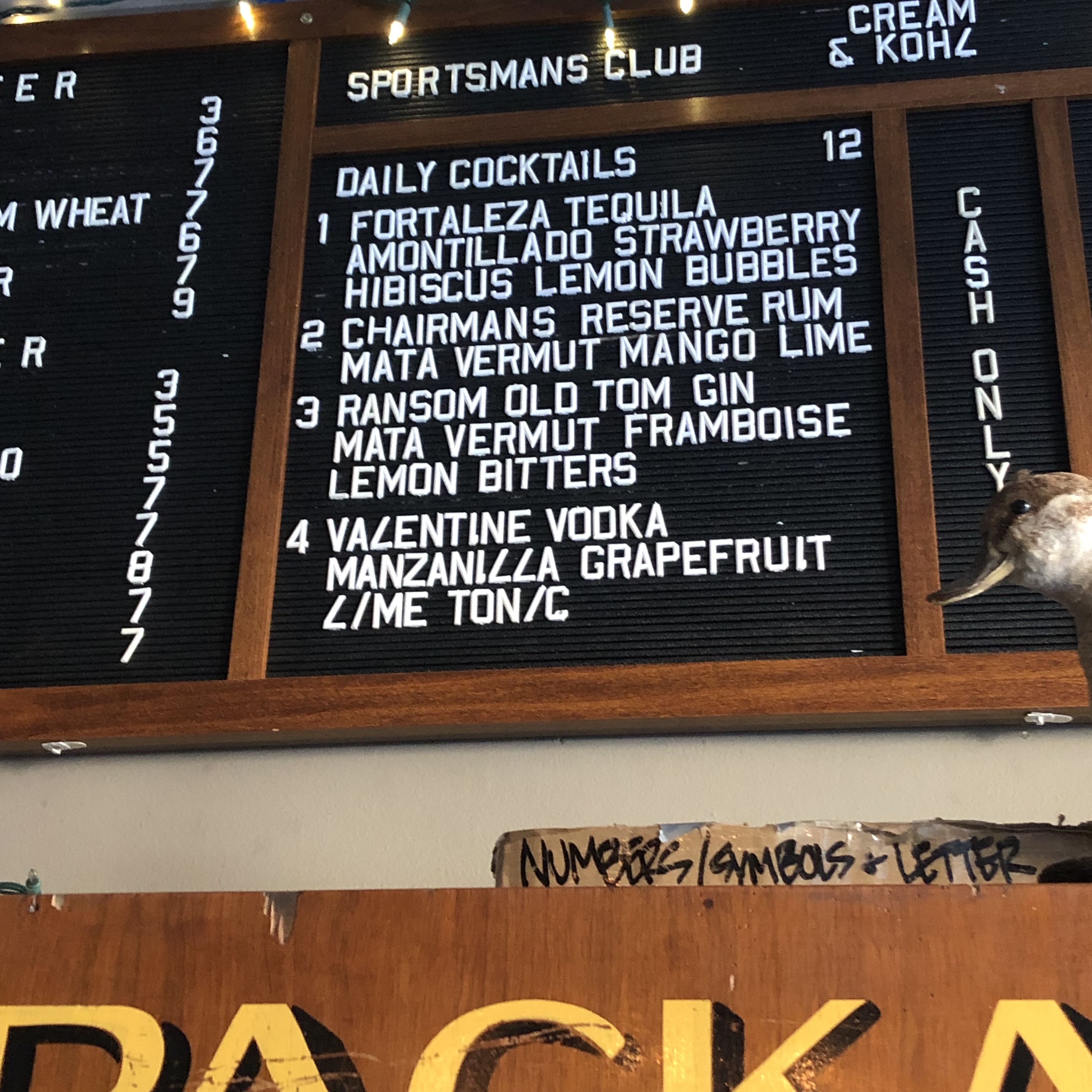 Sportsman’s did some magic with our spirits last week for the Boiling Point 173 after party. Check out the recipe’s below!
Sportsman’s did some magic with our spirits last week for the Boiling Point 173 after party. Check out the recipe’s below!
#1
Ingredients
1.5oz Fortaleza Blanco
0.5oz Valdespino Amontillado
0.75oz Strawberry Hibiscus Syrup
0.5oz Lemon juice
Raventos Blanc de Blancs
Directions
Shake, serve tall topped with Raventos Blanc de Blancs
Garnish with lemon peel
#2
Ingredients
1.5oz Chairman’s Reserve Original
0.5oz Mata Vermouth Blanco
0.75 Passion Fruit Syrup
0.25 Simple Syrup
0.75 Lime juice
Dash Absinthe
Dash Angostura
Directions
Shake, serve on the rocks
Garnish with mint sprig and dash Angostura on top
#3
Ingredients
1.5oz Ransom Old Tom Gin
0.75oz Mata Vermouth Blanco
0.5 Luicen Jacob Framboise
0.5 Simple syrup
0.75 Lemon Juice
Dash Angostura
Directions
Shake, serve down
#4
Ingredients
1.5oz Valentine Vodka
0.75oz Valdespino Manzanilla
0.75oz Grapefruit juice
0.75oz Lime juice
0.5oz Cane syrup
Pinch of salt
Tonic
Garnish: Grapefruit slice
Directions
Shake, serve tall topped with tonic
Garnish w/ Grapefruit half moon
July 25, 2019
Cream Cocktail: Old Pal
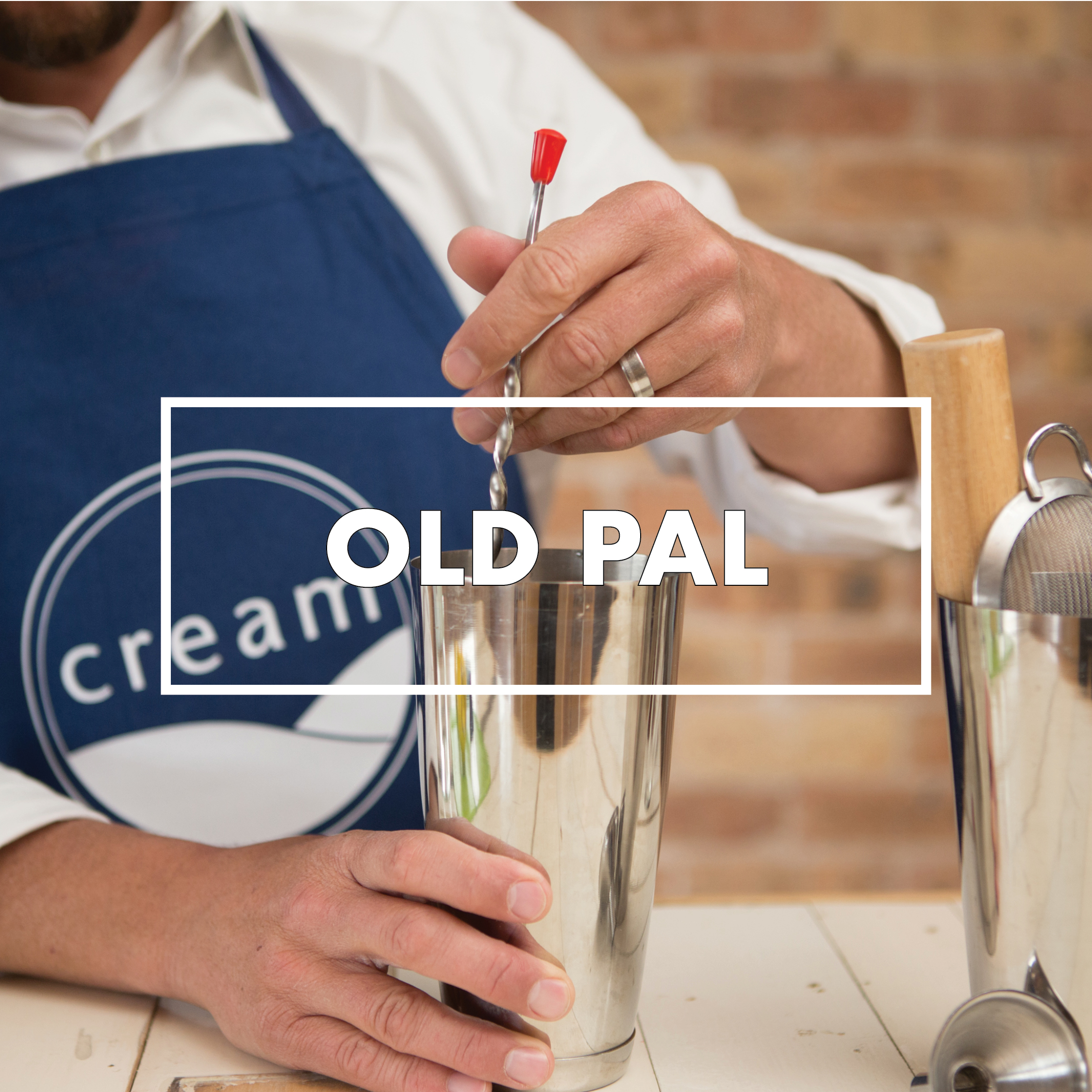
With two books and an eponymous cocktail bar, Irish-born Harry MacElhone has given the drinking world a lot to sip on. After a stint working behind American wells, Harry made his way to Paris after the start of the First World War. In 1922, he began working at the Parisian bar, New York Bar, and he became such a hit around town that within the year they added his name to the sign. The notorious Harry’s New York Bar became the stomping ground for many a famous guest, including the likes of Ernest Sounding and CoCo Chanel.
The three-ingredient cocktail, Old Pal, makes an appearance in Harry’s 1927 book, Barflies and Cocktails. Named after New York Herald sports editor and Harry’s bar patron, William “Sparrow” Robinson, Old Pal consists of rye whiskey, dry vermouth and campari. Sound like a Boulevardier? You’re spot on! Old Pal is the drier, lighter version of the popular cocktail. In our twist on the Old Pal, we swapped out Campari for the Rossa Sicily Amara, lending unique depth and complexity.
Cream’s Old Pal
Ingredients:
1 1/2 Bull Run Straight Bourbon
3/4 oz Rossa Sicily Amara
3/4 Ransom Dry Vermouth
Garnish: lemon peel
Directions:
Stir the three ingredients together until well chilled (about 20 seconds). Strain into either a chilled cocktail glass or over rock. Garnish with lemon peel.
July 25, 2019
Cream Cocktail: Blood Orange Margarita
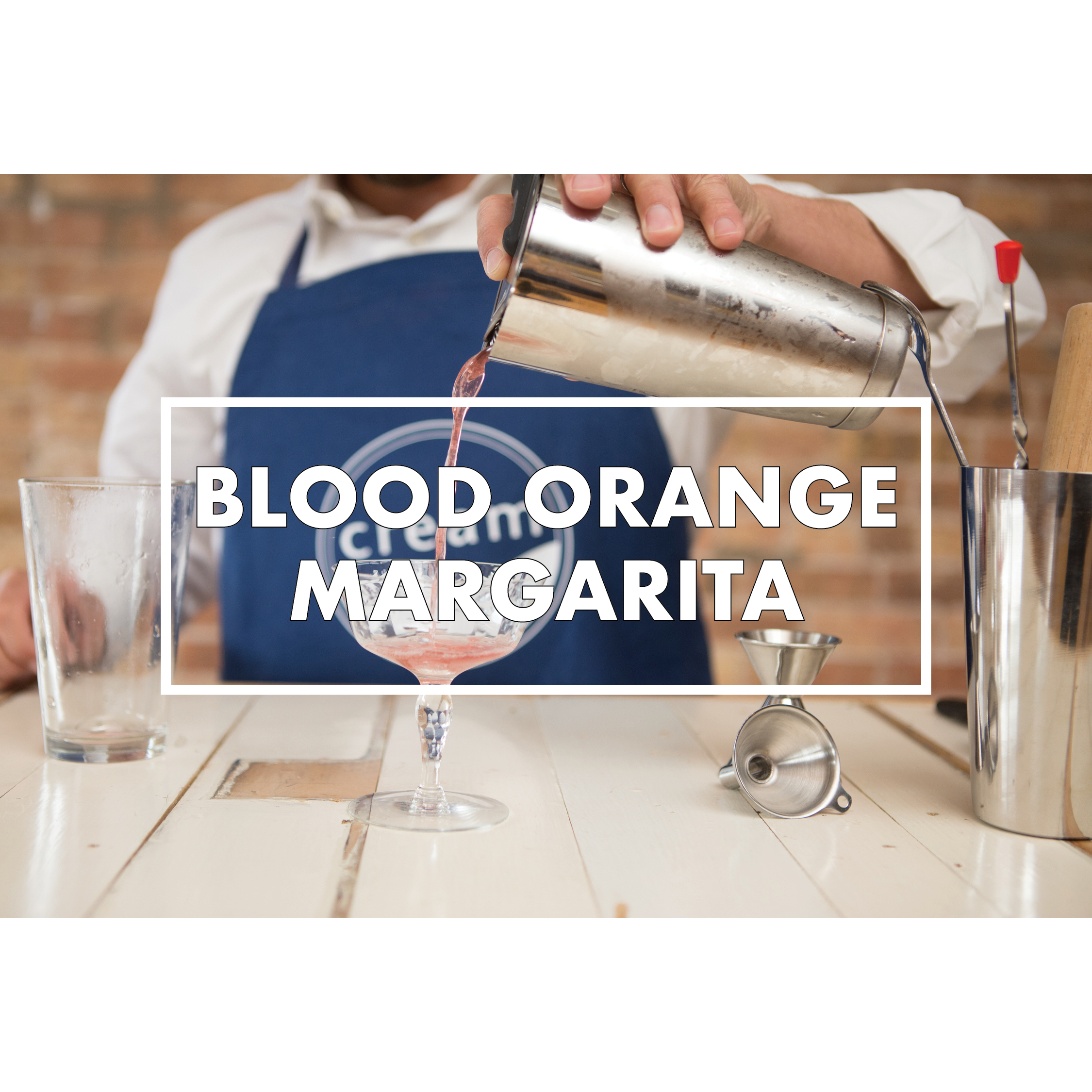 The Orendain family is one of the oldest names in the tequila game. Making tequila since the early 1900s, the Orendains rebranded Arette after the famous Mexican horse Arete took home gold during the 1948 London Olympics. Their Tequilas are made from 100% estate agave and fermented in open stainless steel tanks or stone vessels.
The Orendain family is one of the oldest names in the tequila game. Making tequila since the early 1900s, the Orendains rebranded Arette after the famous Mexican horse Arete took home gold during the 1948 London Olympics. Their Tequilas are made from 100% estate agave and fermented in open stainless steel tanks or stone vessels.
Arette’s Tequila Blanco has all the characteristics of a lowland tequila. With notes of citrus, honey, floral notes and hints of pepper, it’s a no brainer choice for margaritas. Our Blood Orange Margarita is super refreshing and easy to make - and with a splash of the Rossa Sicily Amara, you won’t need to wait for citrus season!
Blood Orange Margarita
Ingredients:
1.5 oz Tequila Arette Blanco
.5 oz Rossa Sicily Blood Orange Amara
.75 oz simple syrup
.5 oz fresh squeezed lime
lime wedge for garnish
Directions:
Prepare a coupe, cocktail or rocks glass with a salted rim. Put all ingredients in a cocktail shaker. Add ice and shake. Strain into the glass or over ice. Garnish with lime.
July 24, 2019
Cream Cocktail: Amezgarita de Jalisco

The Amezgarita de Jalisco is a twist on a classic margarita with Rossa Sicily’s Blood Orange Amara and Raicilla from La Venenosa. La Venenosa Raicilla was created by Chef Esteban Morales to bring these hidden jewels of agave to the United States. Esteban crisscrossed the Jalisco in search of the best producers in each region. The results today are five unique raicillas from four different regions and species of agave made by different mezcaleros and different techniques.
Raicilla is a mezcal that has been produced in the state of Jalisco for over 400 years. In the 1780’s artisans who crafted their mezcals adapted the name raicilla to avoid a mezcal tax levied by the Spanish crown. The deception worked. Most people have little knowledge of raicilla because the world’s most famous mezcal, tequila, became so popular that it overshadowed the other mezcal production in the state of Jalisco. Jalisco offers a great diversity of agave species, second only to Oaxaca. For this reason, along with diverse terroir, equipment and technique, raicillas offer an amazing journey of flavor and history.
Amezgarita de Jalisco
Ingredients:
2 oz La Venenosa Raicilla ‘Tabernas’ Maximiliana (White Label)
3/4 oz Rossa Sicily Amara
3/4 oz Lime Juice
1/2 oz Simple Syrup
Directions:
Shake, double strain over ice in rocks glass.
Garnish with a lime wheel.
July 18, 2019
Drinking with the Sheep
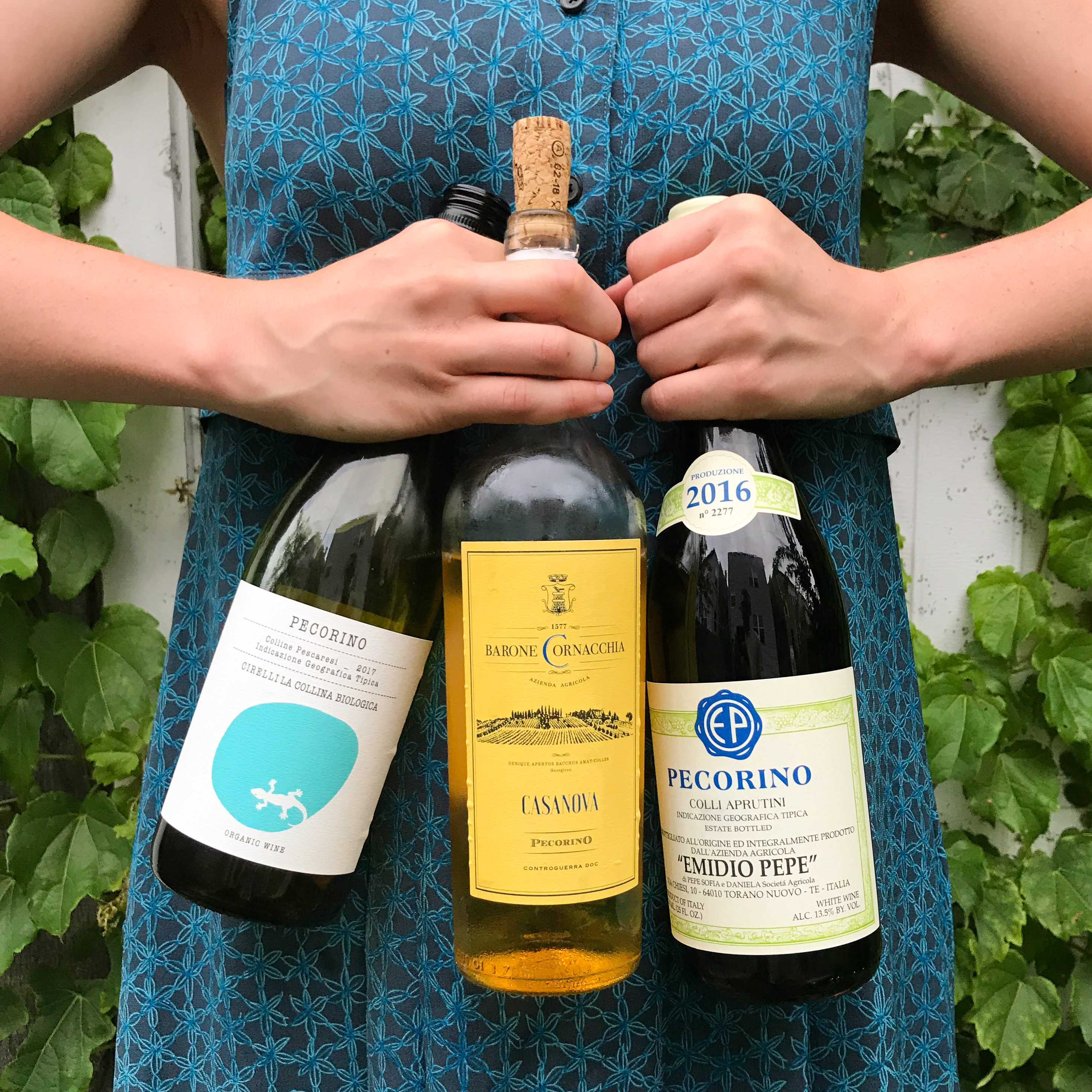 If forced to reincarnate as part of the animal kingdom in a sort of Yorgos Lanthimos-inspired nightmare, an Italian sheep, or Pecora, free-grazing it’s way through the hilly vineyards of the Marche wouldn’t be a bad choice. These wooly beasts like grapes so much, in fact, that Italians named one after them. Translating as little sheep, the early ripening, sweet and crunchy Pecorino grape got its name for being the favorite among the flocks. Yes, you read that right - there’s another, less cheesy Pecorino to pair with your Italian food.
If forced to reincarnate as part of the animal kingdom in a sort of Yorgos Lanthimos-inspired nightmare, an Italian sheep, or Pecora, free-grazing it’s way through the hilly vineyards of the Marche wouldn’t be a bad choice. These wooly beasts like grapes so much, in fact, that Italians named one after them. Translating as little sheep, the early ripening, sweet and crunchy Pecorino grape got its name for being the favorite among the flocks. Yes, you read that right - there’s another, less cheesy Pecorino to pair with your Italian food.
![sheep-[Recovered].gif](http://www.creamwine.com/images/sheep-%5BRecovered%5D.gif) Pecorino is an autochthonous grape variety, originating from south of the Marche region and north of Abruzzo. Although once widely grown, naturally low yields drove the straw-colored grape to near extinction during the 20th century. Pecorino production was revitalized during the 1980s, when a local winemaker, accompanied by agricultural researchers, rediscovered an overgrown Pecorino vineyard. After grafting the rootstock and bringing the vines to their former glory, the wine proved worth the search.
Pecorino is an autochthonous grape variety, originating from south of the Marche region and north of Abruzzo. Although once widely grown, naturally low yields drove the straw-colored grape to near extinction during the 20th century. Pecorino production was revitalized during the 1980s, when a local winemaker, accompanied by agricultural researchers, rediscovered an overgrown Pecorino vineyard. After grafting the rootstock and bringing the vines to their former glory, the wine proved worth the search.
Word of the grape’s resurrection got around, and in the following decades, Pecorino increased in production, spreading in popularity from local wine bars to international beverage lists.
Wine somms have caught on for a reason. Pecorino has all the unique, complex qualities that make Italian whites so beloved. A sugar-rich grape, Pecorino’s sweetness transforms when fully fermented, leaving behind a dry white with common notes of tropical fruit and citrus complemented by the grapes natural acidity and minerality. All these sought-after qualities make for a fresh, well-balanced and full-bodied white with a satisfying mouth feel and excellent aging potential. Plus, it wouldn’t be Italian if it didn’t go with warm summer nights and multiple courses - the crisp, structured Pecorino is a no-brainer match for vegetable adorned pizzas, grilled fish, and lightly fried apertivos like calamari and ricotta-filled squash blossoms.
Here are some of our favorite Pecorino’s that we’re pretty sure you’ll love too:
Cirelli 2017 Pecorino, Colline Pescaresi IGT
Francesco Cirelli is rocking the vines of Abruzzo (for a visual, check out these new Pet Nat rebels). His low intervention, organic (and affordable!) wines have turned us all into super fans. A complex, impressive white with serious finesse, Cirelli’s Pecorino is another team favorite. Dry and aromatic with notes of citrus and honey, this bottle is the perfect pairing for beach-side picnics and take out sushi.
Last seen at one of our favorite new pasta spots, Tortello.
Barone Cornacchia 2017 Pecorino, Controguerra DOC
The Cornacchia’s Pecorino is the best thing to happen to your rent-week budget this summer. Azienda Agricola Barone Cornacchia is among the oldest farms in the province of Teramo in Abruzzo, with family history on the estate dating back to the 16th century. Today, the certified organic winery is led by siblings Filippo and Caterina Cornacchia - a duo that has introduced new wines while staying true to the philosophy of their ancestors. “Dry” doesn’t do this fresh and complex white justice. This is a glass full of pineapple, white peach, and citrus with salinity and minerality to boot.
Emidio Pepe 2016 Pecorino, Colli Aprutini IGT
Emidio Pepe is a classic in the Italian wine game, and we couldn’t be happier to rep these amazing wines in Chicago. Certified biodynamic, the wines are made in a super traditional style. It is rare to find such a raw expression in today’s age of industrialization. Harvest, crushing and destemming is done by hand. No additives or sulfites are used, and wines undergo indigenous yeast fermentation. Emidio Pepe’s first Pecorino was released in 2010 - and it’s been on our highly recommended lists ever since. Lush and silky, with notes of apricots, spice and citrus.
July 03, 2019
American Bubbles!
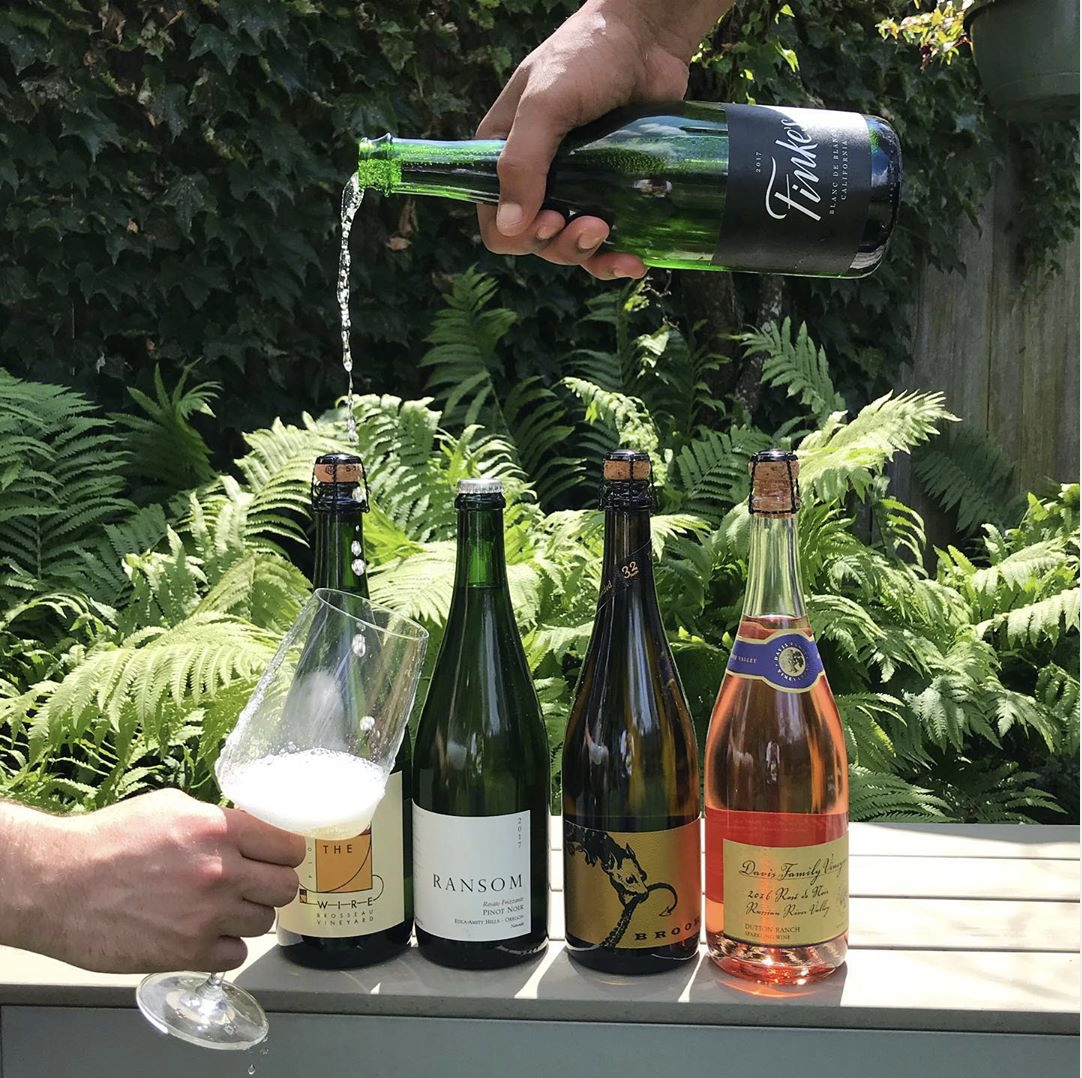 In the world of sparkling wine, there’s a lot more out there than Champagne on December 31st and bottom shelf Prosecco for every other Sunday morning during the year. But when it comes to finding affordable sparkles, it’s hard to discern the good stuff from the mass-produced, flavorless, and dare we say it - super sweet - sparkling wine. All this confusion in the world of bubbles is too bad, however, because we think wine in all it’s sparkling forms is great for any occasion, including all bankrolled holidays. So if your looking to side step rosé season, or your host’s preference for the Champagne of beers, celebrate this Fourth of July with some killer domestic sparkling wine.
In the world of sparkling wine, there’s a lot more out there than Champagne on December 31st and bottom shelf Prosecco for every other Sunday morning during the year. But when it comes to finding affordable sparkles, it’s hard to discern the good stuff from the mass-produced, flavorless, and dare we say it - super sweet - sparkling wine. All this confusion in the world of bubbles is too bad, however, because we think wine in all it’s sparkling forms is great for any occasion, including all bankrolled holidays. So if your looking to side step rosé season, or your host’s preference for the Champagne of beers, celebrate this Fourth of July with some killer domestic sparkling wine.
American’s have been making sparkling wine since the 1800s, but it wasn’t until the second half of the 20th century that it started to really catch on. From the get-go, many US winemakers turned to the Champagne model for making sparkling wines. Similar to the French AOC, cool-climate Chardonnay and Pinot Noir from state-side regions like California, Michigan and the Pacific Northwest make for fresh, sparkling wines with balanced acidity and finesse. Over the past few decades, American sparkling wine production has increased in both diversity and production, and we can’t get enough of it.
So, if you didn’t plan your route to the fireworks depot at the Indiana state line before the holiday weekend traffic hit, check out some of our home-grown sparklers instead.
Finke’s 2017 Blanc de Blancs, California
Brooks 2015 Extended Tirage Sparkling Riesling, Willamette Valley
Davis Family 2016 Sparkling Rose de Noir, Dutton Ranch
Under the Wire 2014 Brosseau Vineyard Sparkling Chardonnay
Ransom 2017 Rosato Frizzante Pinot Noir, Eola-Amity Hills
July 03, 2019
Fourth of July - Belle Isle Bubbler!

Single Serving
Ingredients:
- 2oz Valentine White Blossom Elderflower Vodka
- 1.5oz Grapefruit Juice
- .5oz Lime Juice
- 1oz Grapefruit Oleo (see Oleo directions)
Dash of Salt or Saline Solution
Build into solo cup, add ice, top with Sparkling Rose, throw a straw in it and party.
Punch size!
1 Bottle Valentine White Blossom Elderflower Vodka
18.75oz Grapefruit Juice
6.25oz Lime Juice
12.5oz Grapefruit Oleo
Throw some salt in it to taste
Combine all ingredients into a large pitcher and stir.
Serve individually over ice and top with Sparkling Rose.
Grapefruit Oleo Directions:
4 grapefruits, zested and peeled
1 cup sugar
1 cup lemon juice
Muddle the zest and peels with the sugar, then let sit for 30 minutes. Mix with the lemon juice, then strain off the peels. Strain and put in a bottle. Voilà! You have grapefruit syrup.
And don’t forget to RSVP for our first-ever spirits portfolio tasting Boiling Point 173!
Monday, July 22nd
1pm - 4pm
Eleven|Eleven
1111 West Lake Street Chicago, IL 60607
RSVP HERE
July 01, 2019
Major País Love
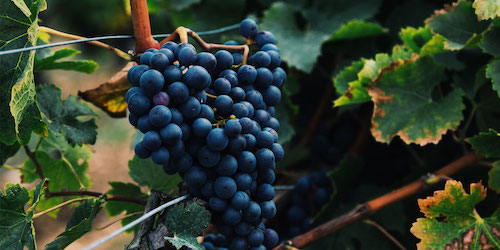
Image from VinePair, published July 1, 2019
VinePair is showing some major love for País this summer, and we are all about it. Check out their article about some of the killer old vine wines from South America, including the folks at Cara Sur and Gonzalez Bastias:
Low-Intervention Winemaking Is Giving this Ancient Grape a Modern Boost
Roll call! País at Cream:
Old World plantings may have put Chile and Argentina on the map for mainstream wine sales, but it is the centuries-old, dry farmed, often ungrafted Criolla vines and granitic soils in the Secano Interior’s Bío-Bío and Itata that have inspired the next generation of winemakers (and cidermakers!).
Many South American winemakers are at the forefront of instituting progressive, climate-conscious practices. These wine producers, like Clos des Fous and González Bastías, are committed to promoting Chile’s rich history of a long neglected and local farming community, along with investing in the country’s future, though practicing sustainable winemaking techniques.
País, low-maintenance in the field but difficult in the cellar, proves to be a perfect grape for low-intervention practices, including carbonic maceration. Take Pipeño - light, fresh, and fruit driven, dismissed in the era of Bordeaux as the poor man’s wine, but now gaining traction in the global market as Chile’s Beaujolais Nouveau. At Vina Maitia in the Maule Valley, Old World trained Frenchman David Marcel put his Pipeño in beer bottles, emphasizing the wine’s easy drinking nature, with all the bright, fruity notes that the world loves in French glou glou.
We are excited to work with Brazos to showcase exemplary, sustainable wines coming from Chile and Argentina. We’re stocked up on a bunch of great País, with more on the way this summer!
Gonzalez Bastias Matorral 100% Pais from 200 yr old vines made completely traditionally and by hand. The vineyard is farmed without irrigation or the use of machines and according to biodynamic principles. Sweet notes of plum, almonds, anise, and brown sugar show on the nose with hints of pineapple sage, pine nettles, and and brown sugar lead to a smooth, nicely balanced palate. Plus, check out their Orange - new drop!
Vina Maitia Aupa Pipeno Pipeño is an old style of Chilean wine that was produced in a simple manner and meant to be enjoyed by farmers. While pipeño historically has a reputation as a quaff some folks drink like water, David Marcel and Loreto Garau, owners and operators of Viña Maitia, believe pipeño is a Chilean wine tradition worth preserving. This fruit driven, easy drinking wine has fresh acid and low tannin. It’s a perfect summertime red that can be enjoyed with a range of casual fare (including seafood) throughout the evening. Serve chilled. 2018 arriving in a few weeks!
Vina Maitia Itzal 100% old vine Pais. Plum, currant, red fruits, and toasted pine nuts dance around notes of dried herbs, a saline quality, and wet soil on the nose. The palate shows red fruit and crushed dried leaves held up by a good structure of tannin and acid.
Clos des Fous PMG Assemblage “Pour Ma Gueule” is a term commonly used by French vintners which translates to “For my gob” and usually refers to a stash of wine determined too good to sell to the public and reserved for the winemakers’ personal consumption. Notes of red berries, black cherry and pepper, with bright acidity and fine tanins.
